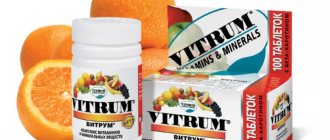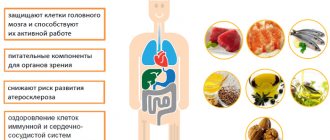What are the benefits of vegetable salad?
How many calories are in a vegetable salad, what beneficial properties it has, all this is of great interest to those who lead a healthy lifestyle and monitor their health and figure. So we will try to answer these questions in the next article.
Vegetable salad is certainly a healthy and versatile dish. After all, it is common knowledge that fresh vegetables are a rich source of fiber, mineral components, vitamins and other substances we need.
Vegetable salad can act as an independent dish. It would be a good option, for example, for breakfast. People who want to lose weight or get rid of excess weight should pay attention to it. If at lunch you prefer a vegetable salad as a first course, then you will feel full sooner and, therefore, you will eat less.
But this, of course, does not mean that you can eat salads in unlimited quantities. After all, vegetables also contain a certain amount of calories. You should also remember that not every vegetable is suitable for a salad if the goal is to lose weight.
To reduce the calorie content of a dish, choose raw vegetables for it: their calorie content is lower than that of stewed vegetables, and they contain more vitamins and minerals, because some of the nutrients are lost during cooking.
The main criterion for selecting vegetables for salad is their juiciness. They contain more liquid, therefore they will contain fewer calories.
Fiber in vegetables
Vegetables that contain a lot of fiber promote rapid weight loss. How does this happen? You spend more time chewing such vegetables, and this leads to the fact that the body catches the signal from the stomach earlier about satiety and stopping the meal.
Almost all vegetables are a storehouse of fiber, but there are some that contain more of this substance. For example, legumes, carrots, cabbage, Brussels sprouts, cauliflower, and broccoli are leaders in fiber content.
Remember that when eating vegetables in large quantities, you need to increase your water consumption in order to prevent stomach discomfort.
How many calories are in a vegetable salad?
Prepare the salad according to this recipe:
Products (for 4 servings):
- White cabbage – 300 g. – (81 kcal)
- Fresh cucumbers - 2 pcs. — (39 kcal)
- Red bell pepper - 1 pc. — (27 kcal)
- Yellow bell pepper - 1 pc. — (27 kcal)
- Parsley - to taste
- Vegetable oil - 4 tbsp. l. — (576 kcal)
- Salt - to taste
- Sugar - 1 tsp. — (27 kcal)
- Vinegar - 0.5-1 tbsp. l.
How to cook:
- We clean the cabbage from the outer rough leaves and wash it. chop finely, sprinkle with salt and, lightly rubbing with your hands, place in a salad bowl.
- Wash the peppers, remove the seeds, cut into half rings and place in a salad bowl with the cabbage.
- Wash the cucumbers, cut them into thin half rings, and put them in a salad bowl.
- Wash the greens, chop them finely and put them in a salad bowl.
- For dressing, mix sunflower oil, vinegar and sugar.
- Season the salad and mix.
Based on the posted recipe:
The calorie content of vegetable salad with oil, per 100 grams, is:
Calorie content of vegetable salad per 100 grams
The calories in a vegetable salad will depend on what oil or dressing you use and how many different types of vegetables you add. So, if you want to reduce the calorie content of a finished dish, reduce the amount of some foods and replace them with others. If you find it difficult to understand what this will look like in practice, use a visual table.
Vegetable salad calorie content per 100 grams:
As you can see from the sign, the vegetable mix can be eaten without harm to your figure. 100 grams contain only 202 kilocalories, and by reducing the amount of vegetable fat to 1 teaspoon, you can reduce its nutritional value by a third. This is recommended for those who are working on weight loss.
By adding salad to your diet, you get vitamins C, B, A every day, saturate your body with folic acid, potassium, and other microelements. They strengthen the immune system and blood vessels, give healthy looking skin and give energy. In combination with fiber, which is part of vegetables, vitamins will help you in the fight for youth and beauty.
Salads seasoned with vegetable oil are an excellent alternative to harmful mayonnaise. For dietary nutrition, they are an excellent way to get enough without the use of trans fats, preservatives and with benefits for the body.
The oil itself is quite high in calories (about 900 Kcal), like any other fat. The benefit of vegetable oil is the presence of polyunsaturated acids, which the body does not produce on its own. Their absence negatively affects hormone formation and causes great harm to the body.
Modern scientists have come to the conclusion that just a couple of tablespoons of vegetable oil a day will help protect against heart attack or stroke in old age, since the oil regulates cholesterol metabolism in the body and prevents atherosclerosis.
Calorie content of vegetable salads in different versions
The components of vegetable salads, of course, are vegetables. The energy value of such snacks ranges from twenty to one hundred and forty kilocalories. Salads with potatoes and asparagus have higher calorie content.
As you can see, this treat does not harm our figure and can be safely included in the diet menu.
On a note! Vegetables are a real storehouse of valuable vitamins and minerals that strengthen our body.
Let's look at the calorie content of the most popular types of vegetable snacks:
- A vegetable salad-cocktail contains one hundred and forty-seven kilocalories.
- A snack based on apples and radishes contains one hundred and fifty-seven kilocalories.
- A salad with apples and bell peppers will contain one hundred and twenty-three kilocalories.
- A salad based on cauliflower, cucumbers and fresh tomatoes brings us seventy-eight kilocalories.
- A mixed vegetable appetizer contains ninety-four kilocalories in its raw form.
- If you add asparagus to the appetizer, it will contain two hundred thirty-seven kilocalories.
- A salad with turnips contains one hundred and forty-two kilocalories.
- The energy value of a salad with radish and potatoes in Kabardian style is one hundred twenty-eight units.
- A radish salad with sour cream dressing contains one hundred and six kilocalories.
- Everyone's favorite salad of tomatoes, peppers and cucumbers brings us only twenty-five kilocalories.
- A Chilean tomato appetizer contains twenty kilocalories.
- A traditional salad of cucumbers and tomatoes gives us ninety kilocalories.
- An appetizer of assorted vegetables with the addition of sea cabbage contains one hundred and thirty-seven kilocalories.
- A salad based on rice with the addition of bell peppers and peas contains two hundred and forty-eight kilocalories.
- A salad with zucchini and tomatoes will contain one hundred and three kilocalories.
- “Greek” salad contains one hundred eighty-nine kilocalories.
- A pea snack with apples gives us one hundred and two kilocalories.
- Radishes with sour cream dressing contain one hundred and three kilocalories.
- An appetizer of tomatoes with garlic sauce has a caloric value of seventy units.
- Tomatoes with apples and cucumbers contain seventy-one kilocalories.
- The Korean asparagus appetizer contains one hundred and fourteen kilocalories.
- A green salad with tomatoes and eggs will contain fifty-three kilocalories.
On a note! For salads, choose juicy vegetables. They have a lot of liquid component, which means fewer calories.
The energy value of vegetable salad is significantly influenced by the dressing. How many calories are in vegetable salad with mayonnaise? This figure is equal to forty-five kilocalories. Choose low-fat mayonnaise if you are following a diet menu.
Calorie content of vegetables for weight loss
How many calories are in vegetables? The calorie content of vegetables for the most part is less than 100 kcal with a fairly high saturation of nutrients. This makes them integral to diets. For example, Brussels sprouts, broccoli, cauliflower, peas, eggplant, turnips, carrots, spinach and pumpkin contain up to 30 calories per half cup!
The calorie content of vegetables may be even lower. For example, lettuce contains 5 kcal, while half a cup of chopped radish or sweet pepper contains only 9 kcal.
A gourmet treat – low-calorie, delicious!
This salad is considered a treat of Caucasian cuisine. It is original in that all components must be laid out in layers. And on top of the appetizer is poured with a dressing made from walnuts. This design allows us to choose how to eat vegetables - with dressing or fresh.
Ingredients:
- zucchini (preferably young) - one fruit;
- cucumber - one piece;
- tomato - one fruit;
- bell pepper (preferably red) – one piece;
- red onion - half a head;
- fresh basil;
- dill;
- salt;
- balsamic vinegar;
- olive oil - two tablespoons. spoons;
- garlic - one clove;
- lettuce cress.
Preparation:
- Peel the zucchini.
- Cut the zucchini pulp into medium-sized cubes.
- Heat a little refined vegetable oil in a frying pan.
- Add the zucchini and fry it until golden brown. Or you can bake the vegetable on the grill.
- Let the zucchini cool a little and place them nicely in one layer on a flat plate.
- Clean and rinse the onion. Chop it into thin half rings.
- Place the onions on top of the zucchini.
- Wash the tomato and cut into cubes.
- We also wash the cucumber and chop it into rings.
- Remove seeds and stalks from the pepper. We wash it and chop it into strips.
- Place the prepared vegetables on top of the onion layer.
- Let's prepare the dressing for our treat. Peel the nuts from the shell. Grind them with a blender or coffee grinder.
- Place the chopped nuts in a bowl.
- Wash and chop the basil.
- Add the greens to the nut mixture.
- Wash and dry the dill. We chop it finely and send it to the ingredients of the dressing.
- Add 0.5 teaspoon. spoons of salt and black pepper.
- Let's add just a couple of drops of balsamic vinegar.
- Let's add two tables. spoons of olive oil.
- Peel the garlic clove. After passing it through a press, add the garlic to the dressing.
- Stir it until it has a homogeneous structure.
- Spoon the nut dressing on top of the snack.
- All that remains is to sprinkle the treat with watercress.
Greek salad
Recipes and calories.
Greek salad calories – 322 (three hundred twenty-two) calories.
Recipe:
- Place leaves on plates (four leaves per plate).
- Cut the tomatoes directly into the lettuce leaves.
- Remove the seeds from the pepper.
- Cut it into strips (the size of the straw is medium).
- Cut the onion into half rings (the onion skin is purple).
- Slice the cheese.
- Cut the cucumber lengthwise.
- Cut it into small slices.
- Add 10 olives.
- For 1 serving, squeeze half or all of a lemon (a matter of taste).
- Add three spoons of olive oil (any spoon).
Salad composition:
- Brynzochka - one hundred and fifty grams.
- Cucumbers (two small ones).
- Green pepper (one).
- The bulbs are purple (several).
- Pitted olives (seven or ten per serving).
- Pepper (black, ground) to taste.
- Tomatoes (several medium ones).
Vegetable salad
Product prices may vary. Check the current cost of the product at each specific McDonald's location.
*I hereby freely, of my own free will and in my own interest, agree that the following personal data: Last name, first name, patronymic, date of birth, gender, location information, phone number, email address, social network ID (including including Facebook and Vkontakte), AppleID, GmailID, TokenID, as well as data about the Internet session (including information about my search queries and behavioral statistics) and Internet device (including manufacturer, model, operating system version, identifier devices, device ID and other technical parameters and identifiers, including IMEI, MAC address, IP address), as well as cookies, can be processed (processing means collection, recording, systematization, accumulation, storage, updating, modification, use , depersonalization, destruction, transfer (provision, distribution or access) in order to provide the opportunity to use this McDonald's Internet resource, including: providing the ability to individually configure the services and functions of this Internet resource, provide/receive information (including about promotions, competitions and incentives), maintaining statistics, interacting with me during the use of this Internet resource and/or during the use of the Operator’s goods or services, as well as to achieve other goals provided for by the Operator’s Policy regarding personal data.
I also hereby freely, of my own free will and in my own interest, give full and unconditional consent to the use of my data specified above to maintain contact with me in any way, including calls to the specified mobile phone through the use of telephone and mobile radiotelephone communications, sending messages to the specified mobile phone, including but not limited to SMS messages, messages via WhatsApp, Viber and other instant messengers and services, sending emails to the specified email address, sending messages on social networks (including Facebook and Vkontakte) for the purpose of referral, including information messages, notifications about ongoing promotions, information about the arrival of new goods/services, advertising and information mailings, events, discounts, their results, for carrying out correspondence surveys in order to study opinions about goods/services, trade organizations, sending news and other information.
This consent is given to the following persons: LLC "McDonald's", registered at the address: 115054 Moscow, Valovaya street, building 26, CJSC "Moscow-McDonald's", registered at the address: 125009 Moscow, Gazetny lane, building 17 (hereinafter jointly referred to as the “Operator”), as well as ADV LLC, registered at 123290, Moscow, 1st Magistralny bl., 5A, floor 1, room 132L, office 9, TelecomExpress LLC registered at 127273, Moscow, st. Otradnaya, 2B, building 7, InfoBip LLC registered at the address: 115191, Moscow, Tulskaya B. st., building No. 11, Floor 5 Pm XIII Kom 1 and other third parties involved by the Operator for the above purposes. The validity period of this consent extends to the period of use by the Personal Data Subject of this Internet resource and related services (but not less than the duration of the user’s account/personal page on this Internet resource) and three years after the expiration of the specified period, until the goals are achieved processing or until there is no longer any need to achieve these goals, unless otherwise provided by federal law.
Option with green peas and beets
We advise lovers of dietary dishes to pay special attention to another very interesting recipe for vegetable salad seasoned with vegetable oil. You can see a photo of such a dish a little later, but now let’s figure out what is needed to prepare it. This snack includes:
- 300 grams of beets.
- Medium bulb.
- 300 grams of carrots.
- 200 g pickled cucumbers.
- 400 grams of potatoes.
- Vegetable oil, any fresh herbs and salt.
Root vegetables are rinsed under the tap, placed in different saucepans, filled with cool water, brought to a boil and boiled until soft. The prepared vegetables are cooled to room temperature, peeled, cut into approximately equal cubes and combined in a deep salad bowl. Green peas, finely chopped onion and pieces of pickled cucumber are also placed there. All this is salted and poured with vegetable oil. The finished snack, the energy value of which is 62.8 kcal/100 g, is decorated with chopped herbs and served for lunch.
Option with olives
This interesting appetizer is prepared from simple and easily accessible ingredients, sold in any modern grocery store. To make five servings of vegetable salad seasoned with vegetable oil, the step-by-step recipe for which will be described below, you will need:
- 300 grams of fresh Brussels sprouts.
- 100 g carrots.
- 70 grams of olives (pitted).
- 60 g green peas (canned).
- 300 grams of sweet multi-colored peppers.
- 300 g boiled potatoes.
- 150 grams of ripe tomatoes.
- 15 milliliters of aromatic vegetable oil.
- 5 ml table vinegar.
- Lettuce leaves and salt.
Step No. 1. Washed
The cabbage is poured with cool water and boiled until tender. At the same time, it is slightly salted so that it does not turn out tasteless.
Step No. 2. Boiled
The potatoes are peeled and cut into not too large pieces.
Step No. 3. B
In a deep salad bowl, combine grated carrots, olive slices, tomato slices, bell pepper half rings and prepared cabbage.
Step No. 4. There
they send pieces of potatoes, salt and vinegar mixed with vegetable oil.
Step No. 5. Ready
The appetizer is placed on a plate lined with fresh lettuce leaves and decorated with canned green peas.
The energy value of one serving of this dish is only 70 kcal.
Apple calorie content. For children
An apple, whose energy value and calorie content are optimal for a child’s body, ranks first among all types of complementary foods for infants. Already at 6 months. An apple is carefully introduced into a child’s diet to normalize the functions of the gastrointestinal tract, as it always combines beneficially with milk and dairy products.
Its fiber, pectin and enzyme compounds very gently relieve the child’s intestines from stagnation, promote gas removal, have an astringent effect on the liquefied medium, and have a calming effect on the nervous system. During the teething period, the baby is traditionally given a quarter of an apple with dense pulp.
The child immediately brings it to his mouth and begins to “bite.” This helps the baby practice chewing movements, gently and naturally sanitize the oral cavity, clearing away lactic acid residues after eating and at the same time massaging the gums that are swollen from dental pressure, which reduces the pain of the process. The child becomes captivated by the taste and sharpness of sensations and stops being capricious.
For preschool children and primary schoolchildren, an apple serves as a healthy snack between meals.
By chewing fresh vitamin pulp, children naturally cleanse the oral cavity and strengthen their teeth. At the same time, they receive the necessary complex of natural vitamins that support the immune system, nourish the blood, and promote the physical and mental development of the body.
Both parents and school, together, instill in middle school students the healthy habit of eating an apple a day. Children are explained that by adhering to such food discipline, both in the present and in the future, they create the potential for good vision, beautiful skin, a snow-white smile, optimal hair growth, and good physical shape.
Chemical composition and nutritional value
% of the daily requirement indicated in the tables is an indicator indicating how many percent of the daily requirement in a substance we will satisfy the body's needs by eating 100 grams of salad.
Since the version of the last salad with the addition of vegetable oil still belongs more to dietary nutrition, we will consider its nutritional value in detail (per 100 g). Additional ingredient – 30 grams of bell pepper.
The vitamin and mineral composition of one serving is quite rich and varied. Here you can see almost all vitamins and most macro- and microelements.
| Substance | Quantity, mcg | % Daily Value |
| Cobalt | 2,716 | 27,2 |
| Sodium | 326.79 mg | 25,1 |
| 21,88 | 24,3 | |
| Chlorine | 525,86 | 22,9 |
| 1,54 | 10,3 |
♦ Example menu with salads for weight loss
The easiest way to start losing weight is with salads; you can and should make salads for yourself all the time. But in order to lose weight on vegetable salads, you don’t have to eat only them. It is enough just to replace some of the other usual products with them.
Sample menu:
- Breakfast:
oatmeal on water with raisins and dried apricots, herbal tea. - Snack:
Celery, carrot and red pepper salad with lemon juice dressing. - Lunch:
vegetable soup without potatoes, a piece of whole grain bread, “Brush” salad of carrots, beets and cabbage. - Dinner:
tomato, cucumber and arugula salad with Italian dressing, grilled chicken breast.
A menu like this will help you lose weight quickly and comfortably without harming your stomach. Stick to this diet for two weeks, and your weight loss will be 2-4 kg, depending on your initial weight. At the same time, you will receive a sufficient amount of vitamins, and fiber will allow you not to feel hungry.
When resorting to a diet for weight loss based on vegetable salads, you need to understand that although such a diet is quite gentle, it will nevertheless not be easy to endure it for a long time, especially for people who expend a lot of physical effort at work.
In this case, it is recommended to eat vegetable dietary salads once a day, for example, instead of dinner, which will not only help normalize weight, but will also have a beneficial effect on the state of the nervous system at the end of the working day and improve sleep. But let’s not forget that the process of getting rid of extra pounds is complex, which means that in addition to a proper diet for weight loss, physical activity is also important - regular, albeit not very intense, physical exercise will have a significant healing effect. Based on materials from neosports.ru, islimming.ru, fitdoma.ru
Vegetables have always been considered ideal foods to eat for weight loss. They contain vitamins, minerals, antioxidants, fiber, and water necessary for the body. The calorie content of vegetables is very low. Some components in vegetables actively promote weight loss and help treat certain diseases.
Eating vegetables during diets allows you to effectively lose weight without the pangs of hunger, saturating the body with water and fiber. At the same time, the likelihood of overeating is reduced. In addition, diets can often cause dehydration, and vegetables prevent this process. Raw fruits have many healing properties. For example, eating vegetables helps prevent heart disease, cancer, and stroke.











